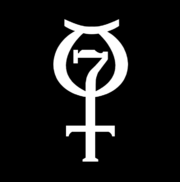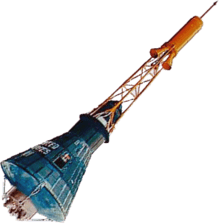Little Joe 5B
Little Joe 5B was an uncrewed launch escape system test of the Mercury spacecraft, conducted as part of the US Mercury program. The mission used production Mercury spacecraft # 14A. The mission was launched April 28, 1961, from Wallops Island, Virginia. The Little Joe 5B flew to an apogee of 2.8 miles (4.5 km) and a range of 9 miles (14 km). The mission lasted 5 minutes 25 seconds. Maximum speed was 1,780 mph (2865 km/h) and acceleration was 10 g (98 m/s²). The mission was a success and Mercury spacecraft # 14A was recovered.[1]
 Little Joe 5B prepared for launch, Wallops Island | |
| Mission type | Abort test |
|---|---|
| Operator | NASA |
| Mission duration | 5 minutes, 25 seconds |
| Distance travelled | 14 kilometres (9 mi) |
| Apogee | 4.5 kilometres (2.8 mi) |
| Spacecraft properties | |
| Spacecraft | Mercury No.14 |
| Manufacturer | McDonnell Aircraft |
| Launch mass | 1,141 kilograms (2,515 lb) |
| Start of mission | |
| Launch date | April 28, 1961, 14:03 UTC |
| Rocket | Little Joe |
| Launch site | Wallops LA-4 |
| End of mission | |
| Landing date | April 28, 1961, 14:08 UTC |
 Project Mercury Abort Tests | |
Mercury spacecraft #14A used in the Little Joe 5B mission, is currently displayed at the Virginia Air and Space Center in Hampton.
See also
References
- Loyd S. Swenson Jr., James M. Grimwood, Charles C. Alexander (1966). "10". This New Ocean: A History of Project Mercury - NASA SP-4201. NASA Special Publication-4201 in the NASA History Series. p. 9. Archived from the original on 2009-04-07. Retrieved 26 June 2013.CS1 maint: uses authors parameter (link)
![]()
